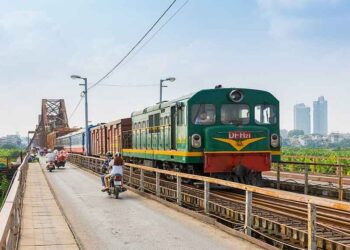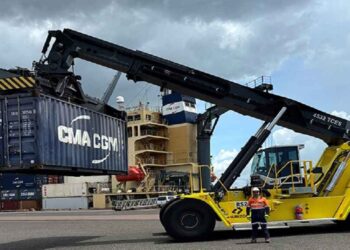Santo Domingo Metro is a rapid transit system serving commuters in Santo Domingo, Dominican Republic. The Dominican Republic lacks a mass transit system and as the country’s population continues to grow, so does the need for an alternative and reliable form of public transport.
The capital of Santo Domingo was the first city in the country to benefit from a metro line that is being designed to meet future needs. Unusually, the project is seen as such a high priority by the Government that there have been claims that areas such as education and health have been neglected in its favour.
One year after work started on the project, government transport authority Oficina para la Reorganizacion del Transporte (OPRET) continued to push forward with the project, with new contracts being let to complete the system.
The project
The idea of a metro line through Santo Domingo first emerged in 2004, when Brazilian President Lula da Silva suggested it to then President of the Dominican Republic Hipolito Megia. The project was part of the national master plan developed to enhance commuting in Santo Domingo and rest of the region.
The metro project is designed to integrate six lines. The first line, currently in operation, was built on a north-south alignment through the city. Construction of the first line started in early 2006 and was completed by early 2008. Passenger numbers are expected to hit 200,000 per day.
The route has been designed to relieve road congestion and pressure on the public transport system, which now struggles to cope with the number of people travelling in and out of the city, as the population of Santo Domingo has grown to over three million.
The first line began its non-commercial operations in December 2008, while the commercial operations began in January 2009. The line cost about US$100m and was funded by the government.
The construction of 22km-long second line began in November 2009. The east-west bound line 2 is completely underground. It crosses the first line at JF Kennedy station.
Infrastructure
The Government of the Dominican Republic has been keen not to let the metro project stall or fall behind. The start-up system consisted of one line. The second line of the system is under construction while the remaining routes are in the development stage. The project is being led by OPRET – the Government authority responsible for the reorganisation of Santo Domingo’s public transport network.
Line 1 is 14.5km (10 miles) long, with 16 stations built underground and on the surface. It runs north-south through the city from Villa Mella to La Feria, including a station to serve Santo Domingo’s university. Originally an entirely underground line was planned, but public opposition means that a mixture of below surface, at grade and over grade running will take place.
Four elevated stations were built, with one at grade level and the remaining ten underground. Standard 1,435mm gauge track was laid and is being supplied with 1,500V dc power supply. An overhead line supplies the power required.
The metro’s stations were designed to accommodate six-car trains, taking into consideration the anticipated readership demands.
Rolling stock
Rolling stock for the first metro line comprises 19 trains from French manufacturer Alstom. They were built to the Metropolis design – already in service in 40 cities worldwide, including Paris. It is a standard product tailored to the needs of each operator, and for Santo Domingo three-car train formations were formed from the 57-car order. Alstom constructed the fleet under a €92.5m contract.
Of the total 19 trains, 17 are involved in regular services and the remaining two are spare.
Production was split between three Alstom factories. The company’s plant at Charleroi, Belgium was charge of the manufacture and integration of the traction systems, while the Le Creusot site in France provided the bogies. Construction of the stainless steel car bodies was carried out at Barcelona, Spain. The first train was delivered in January 2008.
The fleet that can accommodate up to 617 passengers in each train integrates air conditioning, CCTV and a passenger information system.Trains are planned to run at three-minute intervals during peak hours.
Signalling and communications
A consortium of Siemens and leading electronic equipment manufacturer Thales secured the contract to equip the Santo Domingo Metro with electromechanical equipment.
Siemens is providing project management to the installation of electrical systems, and will also install signalling and safety equipment including Automatic Train Protection. The firm will also install the power supply (including traction substations) and build a control centre.
For its part of the contract, Thales is providing supervision systems including station control, telecommunications and contactless fare collection based on the SCADA (Supervisory Control and Data Acquisition) technology.
The future
Plans are being developed for the third line to expand the Metro system within Santo Domingo. It is expected to cross the first route at de Febrero station, although no dates have been set for the start of construction.































